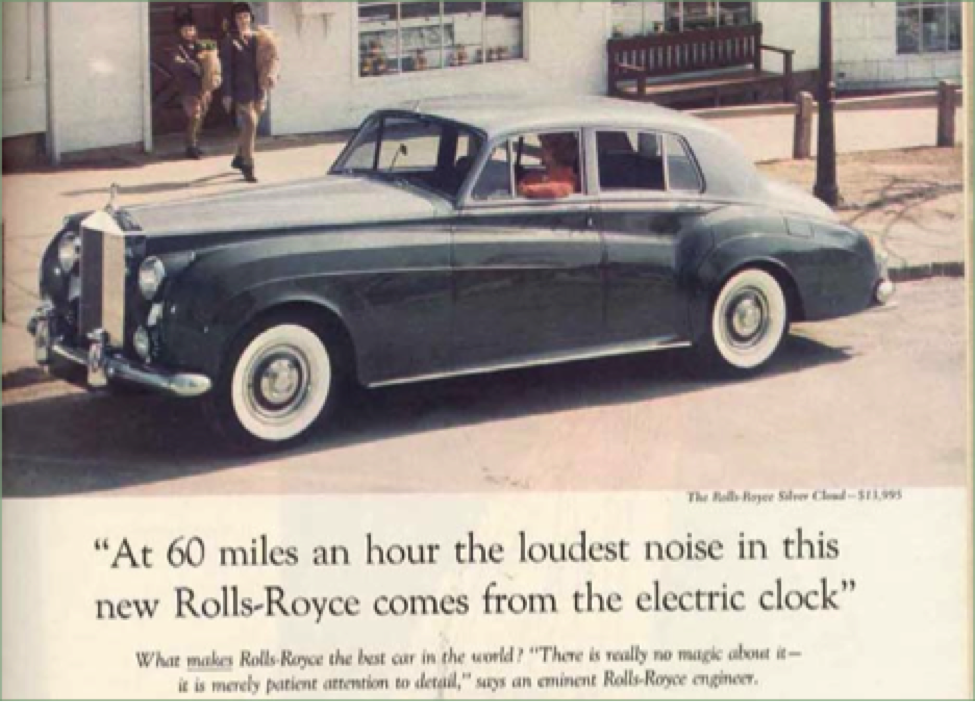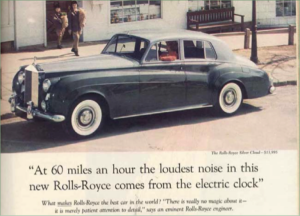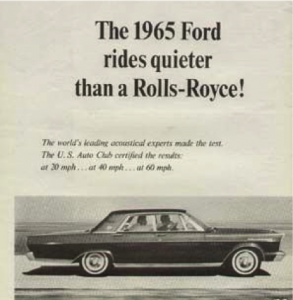Learn this secret, and writing to anyone about anything will become infinitely easier.
This “secret” is at the core of every successful piece of persuasive writing, whether it’s an ad, sales letter, or even a memo aimed at convincing a friend or colleague to adopt an idea you’re proposing.
It’s not new or “breakthrough.” It’s quite simple really.
If your writing has it, it will grab your reader by the lapels and give you a much better chance of persuading him to take the action you want him to take. If it doesn’t, it likely won’t get a second look.
I learned the lesson of not taking this secret seriously the hard way many years ago.
You see, early in my writing career, I had the good fortune to work with a lot of smart people. Two of the smartest were Bill Bonner and Mark Ford. Bill Bonner, a brilliant copywriter, founded and still heads up Agora Publishing, the biggest and most successful information publishing company in the world.
Mark Ford is another great copywriter who’s mentored hundreds of successful writers (me included) and credits this simple secret for all the tremendous success he’s had in this business.
When I started out writing sales letters, we’d have these “brainstorming sessions” whenever we got a new assignment. The purpose of these calls would be to come up with ideas for a sales promotion for a given product.
In my case, it was typically for a financial newsletter or advisory service, which became my specialty niche. On the call would be Mark, Bill, the marketing person for the product I’d be writing about, maybe the product editor, and me, the copywriter.
Being the “new kid,” I’d just listen. By the end of the call, I’d be very excited to write the promotion simply because I had all this great stuff to work with. And why wouldn’t I? I’d just spent 45 minutes with two of the greatest ad minds in the country, after all!
“This Is Too Easy”
So I’d write these letters and I’d have very good success.
“This is too easy,” I’d think to myself. I’d write a letter based on the things we talked about in our calls… the marketer would mail them out, and millions of dollars would flood in.
My reputation as a hot new copywriter was sealed.
But then something happened.
The publishing company started to grow very fast – so fast that Bill and Mark could no longer have brainstorming sessions with every copywriter on every project. So I was left on my own.
Suddenly, my packages didn’t do so well. A few out and out bombed. I was frustrated. “Were my earlier successes just luck?” I asked myself.
After a few months of struggling, I went to Mark for advice, my disappointing promotions in hand. He quickly leafed through three or four of them. After less than a minute, he set them down and looked up at me.
“I see what’s wrong with these right away,” he said.
“Your ideas are weak.”
My first instinct was to be defensive.
“What do you mean? I make a very strong promise in all of them. I explain all the benefits. How is my idea weak?”
I’ll never forget his response.
The Day I learned “The Lesson”
“Tell me honestly, Paul. How much reading, research, and thinking did you do before writing these? Did you really get to know the product, the subject matter? Did you read all the back issues of every newsletter? Did you study past promotions? Did you learn everything you could about the investments and the strategies the editor was recommending?
“Or did you just sit down and start writing the ad from what you already knew?”
Truthfully, it was the latter.
And it was that day I learned the most important lesson any up-and-coming writer can learn:
The secret to great writing is starting out with a great idea.
You see, early on, those “great ideas” were handed to me on a silver platter by Bill and Mark. And when they stopped coming, my letters stopped working. And it became quickly clear to me that I’d better get good at coming up with great ideas or I was destined to be an average copywriter at best.
What Is a “Great Idea”?
So now that you know the secret, let me tell you how I learned to find great copywriting ideas.
First, though, let’s be clear about what a “great idea” is. They are also sometimes called “big ideas.”
There are two definitions I like to use.
First off, a great idea must be a new and interesting way to say something that’s been said a million times before.
In other words, you don’t want to say something that’s been said a million times before. A great idea must be new and original to be noticed. Otherwise, it gets immediately placed in the “I’ve seen that before” basket of your reader’s brain and ignored.
The second is one Mark told me on the day we met when I was struggling. He said: “A great idea is an emotionally and intellectually engaging idea expressed clearly and succinctly so the reader ‘gets’ it in a moment.”
It results in something all copywriters are after – that “Aha” reaction you want your reader to have when he reads your headline and the first few lines of your letter.
You want him to think: “This is something I’m interested in… this is something I think I can use.”
If you want to be a successful writer, you must be able to come up with compelling ideas. You must be able to recognize ideas that are intellectually and emotionally engaging, ideas that will arrest and excite your readers and make them think, “That’s good! I never thought of that before!” Or if you’re advertising something: “Yes, I see how this could help me!”
When your copywriting ideas garner these reactions, you’ve succeeded.
But how do you get there?
How and where do you find intellectually and emotionally compelling ideas?
There Is Only One Way to Find Great Copywriting Ideas
There is only one way: research.
You must read everything you can about the product you’re writing about: manuals, related articles, trade publications.
Talk to the person who created or invented it. Talk to marketers. Look at past ads – those that worked and those that didn’t. Talk to customers if you can. You never know when or where you’ll find that little nugget of information that can propel your ad or letter from the ordinary to extraordinary.
Here’s something Mark wrote on this very subject not too long ago. It pretty much says it all:
“Successful writers are all voracious readers. Their ideas don’t spring fully formed from the thigh of Zeus, they come from hours of reading — reading vertically and horizontally about the subject at hand. They read and read until they come across something that gives them an Aha! experience.”
I’d like to tell you there is an easier way. Some copywriting gurus will tell you that you can swipe good ideas from successful advertisements, past and present.
This is horseshit, plain and simple. Stolen ideas are like luxury cars. They lose 40 percent of their value the moment you take them out of the showroom.
One of the Best “Idea Ads” of All Time
One of the greatest advertising men of all time, David Ogilvy, was a great believer in getting to know your product better than anyone else.
Ogilvy and his agency created some of the best and most memorable advertising of its time – simply because he had a knack for finding that one idea that set his products apart from the rest.
Here’s a great example – one of my favorite ads of all time.
He had just taken on the account for Rolls-Royce automobiles and was setting out to create a series of print ads to run in some national newspapers and magazines.
Of course, Rolls-Royce had always been the standard in luxury when it came to automobiles. Royalty, diplomats, oil sheiks, and other members of the ultra-rich have long driven them (or at least their chauffeurs have). They’re known to be solidly built, and as a result, very quiet.
Rolls-Royce automobiles, as you may know, are one of the few that are hand built – as opposed to coming off an assembly line like the cars you and I likely drive. If you visit the factory, you’re sure to see smartly dressed men and women in white gloves hand polishing the various parts of a finished Silver Ghost or Phantom.
All good fodder for a copywriter, right? In fact, it might lead an ordinary copywriter to write this headline:
“Your Chance to Own the Finest Hand-Built (and Quietest) Automobile in the World”
Or…
“Drive the Automobile of Royalty”
Good enough, right?
But what would be your reaction to either? Underwhelmed would be my guess. Why?
Because both are vague… bordering on cliché.
Neither puts you behind the wheel or lets you “feel” the luxury.
How many companies claim to be “the best”? How many times have you seen messages like these in an advertisement? So many, I would guess, that it wouldn’t even register with you, let alone grab your attention the way an advertisement needs to.
Thankfully for Rolls-Royce, David Ogilvy was no ordinary copywriter.
In his landmark book Ogilvy on Advertising, Mr. Ogilvy explains how he spent three weeks doing nothing but reading about the car… until he came across a single statement he found in a trade magazine quoting one of the Rolls-Royce engineers who helped design the car.
“At 60 miles an hour the loudest noise in this new Rolls-Royce comes from the electric clock”
This statement became the headline of one of the most successful car ads of its day.
So what made this such a “great idea”?
Simply put, it was the way it took an ordinary idea (the car is very quiet) and expressed it in a new and interesting way.
Instead of telling the reader the Rolls-Royce was the quietest car in the world, it showed them – in a manner that was compelling.
No one before used a car’s clock to demonstrate just how quiet the ride was. Because of that, it stopped people in their tracks… and made them read the ad. No doubt, whenever people who saw this ad thought of a Rolls-Royce, they envisioned driving along hearing nothing but the faint ticking of an electric clock!
The ad was so successful, it ran for years. It spawned many copycat campaigns. Ford Motors created an entire “Quieter than a Rolls-Royce” campaign because of this ad:
And here’s the thing…
David Ogilvy didn’t even write the line! He merely found it buried in an obscure trade magazine and recognized it for what it was: pure marketing gold.
It’s a great example of how reading and research can lead to a very powerful copywriting idea.
One of My Best Great Copywriting Ideas (And How I Got It)
I don’t dare to put myself in the company of David Ogilvy, but I have an “idea” story of my own I can share with you.
I was writing a sales letter for a new financial advisory service. It was a trading service based on highly technical “quantitative analysis” – and the theory that you can track where a stock is going next by looking at where it’s been, minute by minute, hour by hour, day by day.
Complicated, technical stuff. All software driven. Very hard to write about.
As a result, I struggled with this project for weeks. I read all the writing the editor had done on the subject… all the back issues of the newsletter he put out. I even bought books on quantitative analysis written by “quant” masters. I learned a few things from all this reading.
I learned this was essentially the system a lot of big trading firms use to trade their house accounts. There were also testimonials from a lot of people who used this system, including one person who claimed to turn around $21,000 into $423,000 in six months.
I tried all kinds of different headlines:
- “Quant Master’s Secret Software Can Predict Where Stocks Are Going Next”
- “The Strategy That Helped One Trader Turn $21,846 into $423,202 Can Now Be Yours”
- “The Same Strategy That Made Goldman Sachs Billions Can Now Make You Rich”
- “Master Mathematician Unlocks the Secret to Predicting Stock Movements”
Not terrible… but nowhere near great either. Why? Because they were ideas this audience had seen many times before in some form or another. They weren’t “new” or “compelling.”
I needed something innovative… an idea they’d never seen before… something that would give them that sought-after “Aha” moment.
And then – a breakthrough…
I was meeting with the client who also happened to be the publisher of this product, and I was invited to a dinner the night before. As luck would have it, the editor of this advisory service would be there… so over dinner (and a few drinks), I started asking him questions about his service.
Lots of questions…
And then it happened. He “said” the very thing I had been looking for. He compared his system for tracking the past and future movements of stocks to the method weather forecasters use to track the movements of hurricanes.
I had my headline:
The Technology That So Accurately Predicts the Path of Hurricanes Can Also Tell You Where Stock Prices Are Heading Next
One trader recently used this computer-based “predictive” trading technique to turn $21,846 into $423,202 within six months…
I knew I had a winner because this one idea – this “hurricane analogy” – took what was a very complex idea and “explained” it in a second.
What’s more, it made perfect sense! It made people stop and say, “I suppose that’s true – if computers can track hurricanes, I don’t see any reason why they can’t track stocks!”
So they read on – and the rest of the letter explained how it all worked.
People “got it”…
The letter went on to bring in over $3 million over the course of a month or two – nearly three times what my previous most successful letter brought in. (Plus, it paid me a nice “royalty” commission of over $60,000!)
That’s the power of a great idea – and why new writers should make recognizing and finding them their number one priority.
Incidentally, if you think the idea of reading and researching on a product is dull, think again. I was never big on it in school, which is why I was never a great student. But I found when taking on a new assignment, there’s nothing more exciting or invigorating than diving head first into a challenge and sinking your teeth into something – and finally discovering that great idea to build your advertisement on.
I suppose it’s a little like the thrill treasure seekers get when they go in search of something, hoping to “strike it rich” with a big find.
In fact, the analogy is more real than you may think. Because once you find that little piece of gold that makes your ad or letter a blockbuster success, the riches are sure to follow in the form of writer royalties and future work!
So do you want a little exercise you can try?
Take your favorite product. Maybe it’s a car, a gadget of some kind, a magazine subscription… anything. Do some research of your own. Read up on the brand itself, its competitors, and all similar products. And see if you can’t find (or come up with on your own) that one great idea that captures the essence of the product.
You can never start learning where and how to find great copywriting ideas too soon.
Or too late, for that matter…
The other day, I was researching a leather briefcase I wanted to buy – one made of solid leather that would last and wear well over the years – that I could pass down to my son.
I found one made by the Saddleback Leather Company, and while on their website, I came across a goldmine of material for any copywriter, including one line in particular that I think would make a terrific idea for an ad:
“Will Your Kids Contest Your Will Over the Briefcase You Have Now?”
Not bad, huh?








